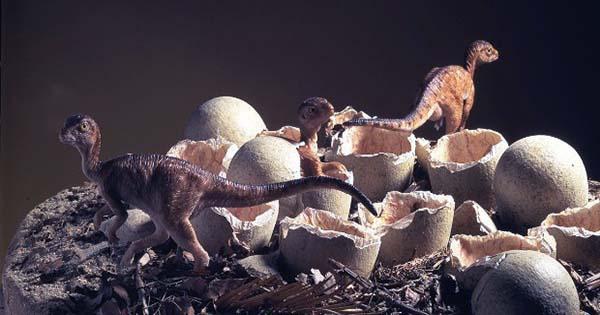It helps to show off your best when you get the chance to be lucky, and that dressing up also improves the chances of mating of ceratopsian dinosaurs that spread the dashing neck frills in the Upper Cretaceous. A study published in the Proceedings of the Royal Society B Journal used modern kits to investigate the physiology of Protoceratops and found that its neck frills probably developed because of sexual selection.
Sex life is across many species today it is most enjoyable in the stupid mating style of the birds of paradise in New Guinea, as competing males have developed more bizarre routines than their rivals have. It may go so far as to make an animal less adaptable to survival (ever seen a peacock fly?) However, the barrier only proves their strength and favorable genes that they have not yet eaten. It is not just about the feathers, it has seen in Attenborough’s winged lizard (yes, it is named Attenborough).
The Protoceratops were a huge sheep size when it is now known as the Gobi Desert of Mongolia. These well documented in scientific collections, so they form an optimal dinosaur group to study with so many reference elements to work with. The study was actually able to use the largest complete set of 3D data from a single dinosaur to determine how the ceratopsians used their fancy frills to evaluate the collated.
Dr Andrew Knapp, a postdoctoral researcher at the Natural History Museum in London, wanted to use modern technology and analysis to see if sex selection could explain the evolution of neck swarms among Protoceratops. “Many fossils have unusual structures and features that are not really found in living animals today,” he told the museum. “The Protoceratops had no horns but they still have a lot of shaking.
Ceratopsian dinosaurs have several theories about the emergence of neck shaking, which also includes characteristic “bony” bones. Some argue that the shocks used for defense, while others suggest that they were for detection. Some have even suggested that they have helped even larger vegetarians control the temperature.
Three-dimensional scans of 30 complete foreheads of Protoceratops allow Knapp and peers to compare different regions of the skull to the pattern. These scans ranged from day-to-day hatching to adulthood, meaning they could also observe how the skull changed shape, as the animal grew older.
While looking at the scans of the Protoceratops, they found that the increase in the weight of its neck followed a pattern known as allometry, which shows how the specific characteristics of living things change with body size. When the allometry is positive, it shows that the animal has a much higher rate of development of a trait than other traits, which usually indicates a sexually selected trait, such as sex or horn.
While Protoceratops skulls point to this positive image, the frill probably suggests sexual selection. However, the remains revealed very little evidence of sexual conflict between male and female skull size and frill morphology.
“There are several examples of living animals where women usually select males based on the size of their tail feathers or calluses, but it is often overlooked that males do the same thing with females,” Knapp said. “Sexual selection is a bit more complicated than the more successful male traits.”
It is noteworthy, however, that since the fancy neck movements of these dinosaurs were probably inclined towards sexual selection, they may also have other activities that involve social behavior, which is difficult to detect from the skulls of endangered animals. Thus, Knapp and colleagues suggest that frills were the result of socio-sexual selection.
“In reality, many‘ sexually selected ’traits perform additional functions such as establishing dominance over people, which can improve one’s access to resources such as food, water and territory,” Knapp told the Natural History Museum. “So really, the boundaries between sexual and social choices have become quite blurred and social choices will often become an important issue as well.”















